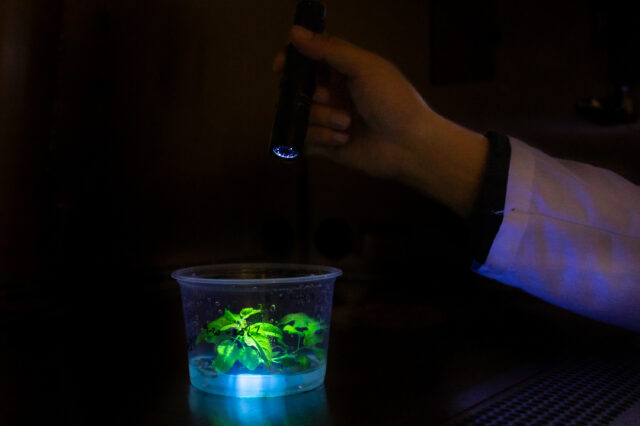
A novel system for genetic engineering in plants that makes it easy to add and study multiple genes simultaneously has won a 2024 R&D 100 Award. The technology developed by a team led by Xiaohan Yang at the Department of Energy’s Oak Ridge National Laboratory doubles the speed and halves the cost of transforming plants to exhibit desired physical traits.
The award is one of 14 conferred on ORNL technology by R&D World magazine out of 141 finalists from 16 countries and regions. The winners will be recognized at the organization’s award ceremony November 21, 2024, in Palm Desert, California.
This system uses a novel split selectable marker (SSM) to insert multiple genes into a plant cell simultaneously, as published in Nature Communications Biology. This means you only need one marker to select and track the success of adding genes. It also allows easy identification of transgenic events—identifying which plants have the new genes—using the naked eye through visualization of two reporters: RUBY, which turns the leaf red under white light, and GFPuv, which causes the plant to glow green under UV light.
The SSM genetic engineering system is the result of “years of research at the Center for Bioenergy Innovation,” a DOE Bioenergy Research Center led by ORNL, said Xiaohan Yang, a Distinguished Scientist who led the development work. “The ability to perform this ‘stacking’ of genes can be easily implemented in existing plant transformation processes while significantly accelerating results.”
“Having the ability to test multiple genes simultaneously facilitates the development of process-advantaged feedstocks for creation of a zero-carbon aviation sector by 2050,” said CBI Director Jerry Tuskan.
The SSM technology is particularly adept at several uses. Examples include trait-stacking, which incorporates multiple desirable traits such as disease resistance or drought tolerance and increased yield into a genetic line; functional genomics, to study how different genes work together in a plant, providing insights into the functions of genes; pathway engineering, such as modifying metabolic pathways or engineering new pathways by co-expressing multiple genes involved in the same biochemical pathway; and multi-gene editing in which a large number of genes can be modified easily using advanced techniques such as CRISPR/Cas-based systems.
This plant co-transformation system offers a powerful tool for improving plants and understanding their genetic functions with applications for plant science, agriculture, forestry, bioenergy, biomaterials and climate change mitigation.
The technology was developed with support from the Biological and Environmental Research program in DOE’s Office of Science. Co-developers of the system include Guoliang Yuan, Tuskan, Md Mahmudul Hassan and Haiwei Lu.
For more information about available technologies for licensing, visit ORNL’s Technology Transfer website.
UT-Battelle manages ORNL for the Department of Energy’s Office of Science, the single largest supporter of basic research in the physical sciences in the United States. The Office of Science is working to address some of the most pressing challenges of our time. For more information, please visit energy.gov/science.
